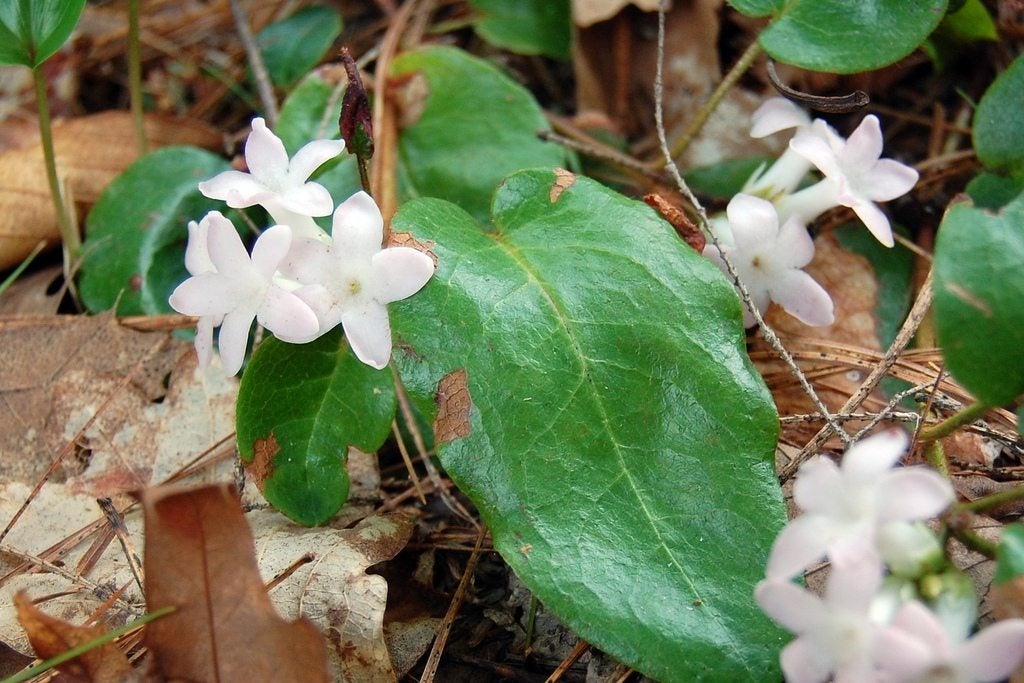Mayflower Trailing Arbutus: How To Grow Trailing Arbutus Plants


According to plant folklore, the mayflower plant was the first spring-blooming plant the pilgrims saw after their first arduous winter in the new country. Historians believe that the mayflower plant, also known as trailing arbutus or mayflower trailing arbutus, is an ancient plant that has existed since the last glacier period.
Mayflower Plant Info
Mayflower plant (Epigaea repens) is a trailing plant with fuzzy stems and clusters of sweet-smelling pink or white blooms. This unusual wildflower grows from a specific type of fungus that nourishes the roots. The seeds of the plant are dispersed by ants, but the plant rarely produces fruit and trailing arbutus wildflowers are nearly impossible to transplant. Due to the plant's particular growing requirements and destruction of its habitat, mayflower trailing arbutus wildflowers have become very rare. If you are lucky enough to see a mayflower plant growing in the wild, do not attempt to remove it. The species is protected by law in many states, and removal is prohibited. Once trailing arbutus disappears from an area, it will probably never return.
How to Grow Trailing Arbutus
Fortunately for gardeners, this beautiful perennial wildflower is propagated by many garden centers and nurseries—especially those that specialize in native plants. Mayflower trailing arbutus requires moist soil and partial or full shade. Like most woodland plants growing under tall conifers and deciduous trees, Mayflower plant performs well in acidic soil. Mayflower arbutus grows where many plants fail to thrive. Keep in mind that although the plant tolerates cold climates as low as USDA zone 3, it won't tolerate warm, humid weather in USDA zone 8 or above. The plant should be planted so the top of the root ball is about one inch (2.5 cm.) below the surface of the soil. Water deeply after planting, then mulch the plant lightly with organic mulch such as pine needles or bark chips.
Trailing Arbutus Plant Care
Once mayflower plant is established in a suitable location, it requires virtually no attention. Keep the soil lightly moist, but not soggy, until the plant is rooted, and you see healthy new growth. Continue to keep the plant lightly mulched to keep the roots cool and moist.
Gardening tips, videos, info and more delivered right to your inbox!
Sign up for the Gardening Know How newsletter today and receive a free copy of our e-book "How to Grow Delicious Tomatoes".

A Credentialed Garden Writer, Mary H. Dyer was with Gardening Know How in the very beginning, publishing articles as early as 2007.
-
 Looking For Plants To Give You The Soft And Fuzzies? Try These 5 Fuzzy Leaf Plant Options
Looking For Plants To Give You The Soft And Fuzzies? Try These 5 Fuzzy Leaf Plant OptionsLovers of texture, drama, silver foliage and tactile plants will adore these special sensory garden additions. These fuzzy leaf plant options will leave you all aglow
By Susan Albert
-
 Get Ready For A Summer Of Hummers! Grow These Full Sun Hummingbird Plants and Flowers
Get Ready For A Summer Of Hummers! Grow These Full Sun Hummingbird Plants and FlowersIf you’re lucky enough to enjoy a sunny backyard, make sure you are maxing out on your pollinator opportunities and grow these full sun hummingbird plants and flowers
By Tonya Barnett